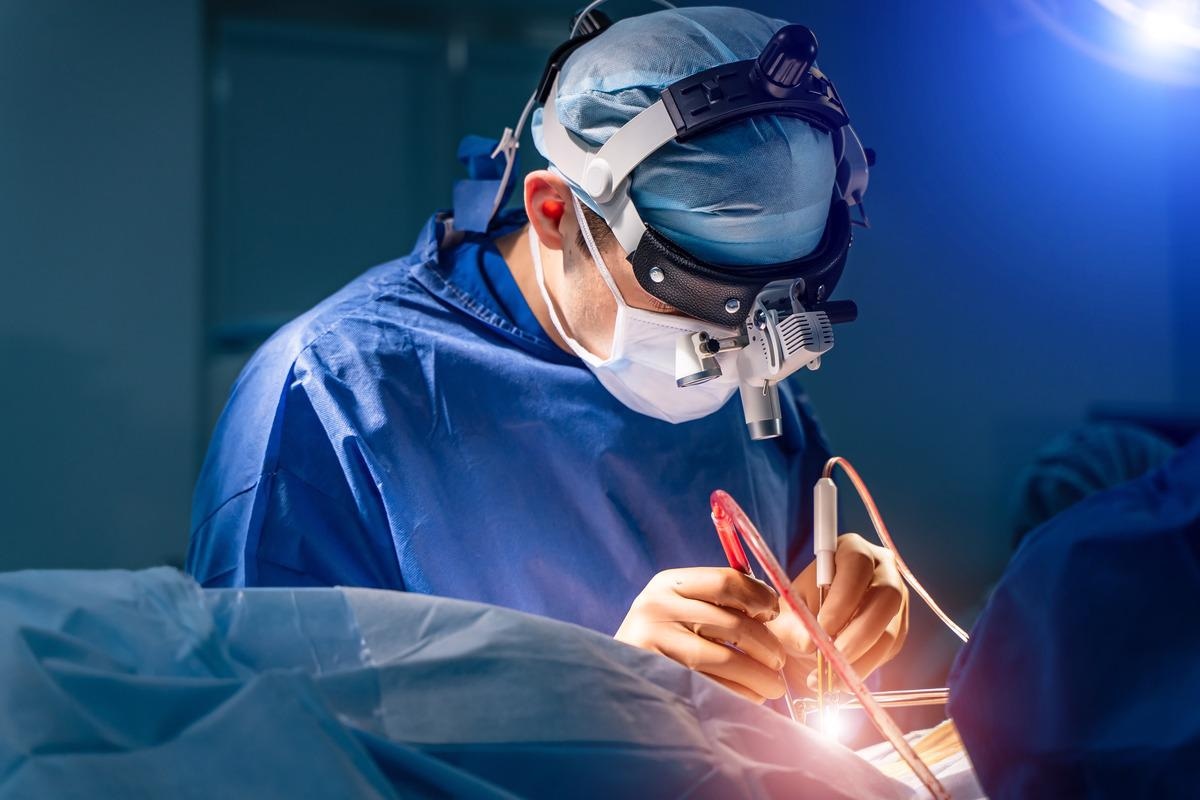Patients undergoing neurosurgical operations with concomitant COVID-19 infection have higher rates of perioperative complications
The coronavirus disease 2019 (COVID-19), caused by the severe acute respiratory syndrome coronavirus 2 (SARS‐CoV‐2), spread rapidly over the whole world. Apart from the typical symptoms such as dry cough, sore throat, fever, etc., many COVID-19 patients also have neurologic features. According to a recent study, they also seem to be more likely to suffer from complications around the time of brain surgery.
 Study: Perioperative Complications of Patients with SARS-CoV-2 Infection in Neurosurgery. Image Credit: Terelyuk/Shutterstock
Study: Perioperative Complications of Patients with SARS-CoV-2 Infection in Neurosurgery. Image Credit: Terelyuk/Shutterstock
Background
Some commonly reported symptoms include encephalopathy, stroke, cognitive deficits, and smells and/or taste alterations. The pathogenesis is related to the known hypercoagulability of the blood in these patients, with severe COVID-19 being related to six or more times increase in the levels of the inflammatory marker, D-dimer.
This implies a high chance of thrombotic events acting on the small or large blood vessels through different mechanisms, causing ischemic or bleeding events. Cerebral venous sinus thrombosis (CSVT) is one such curious event accompanying COVID-19, or to a lesser extent, COVID-19 vaccination, without the usual risk factors being present.
Another fallout of this hypercoagulable state is the occurrence of perioperative complications during neurosurgical procedures on the brain in COVID-19 patients. The current study, published in the Journal of Clinical Medicine, deals with the occurrence of such complications.
What did the study show?
The study included ten adults who tested positive for COVID-19 and underwent cranial neurosurgery at the same time or within ten days after the surgery. The risk of developing venous thromboembolism within three months was assessed with the IMPROVE risk score. The mean patient age was 56 years.
Only two patients had neurologic symptoms of COVID-19 (dysgeusia), and only one was intubated for COVID-19.
Four had brain tumors, two had postoperative infection, two had aneurysms (one had acute rupture), and one had traumatic brain injury with epidural hemorrhage. Half of the patients suffered 12 complications, including three thromboses. Two of these were CSVTs and one a pulmonary embolism. One patient had a jugular vein thrombosis at admission before the positive COVID-19 test.
All ten patients were on anticoagulant prophylaxis. Two had postoperative bleeding, one from a cerebellar metastatic tumor, and one a bleed into the brain matter after a shunt surgery for postoperative hydrocephalus. The latter patient had been on heparin treatment for a pre-operative pulmonary embolism, but heparin was stopped peri-operatively.
The patient died of a brain hemorrhage, one of two deaths in hospital from this series. The other died of septic shock after empyema evacuation.
The perioperative course was notably rockier among the COVID-19 cohort compared to a control COVID-19-negative cohort treated before the pandemic began. Overall postoperative complications occurred in 60% and thrombosis in 30% of COVID-19 patients, compared to <20% and <2% of controls, respectively. Hemorrhagic events were comparable, however.
What are the implications?
This unique paper compares neurosurgical patients with COVID-19 for perioperative complications to those without COVID-19. The high rate of thrombotic complications in this cohort agrees with the overall increase in the rate of pulmonary complications in surgical patients in general with this infection, as well as the increased risk of death.
Other studies have shown a higher incidence of intracranial bleeds, mostly subarachnoid hemorrhage but also intraparenchymal hemorrhage. As described in earlier papers, this could be due to vasculitis, but CSVT could also be a cause.
COVID-19 is associated with hypercoagulability and a higher level of heparin-binding proteins. The incidence of thrombotic complications is higher than expected, even with low-dose heparin prophylaxis against deep‐vein thrombosis (DVT). With severe COVID-19, 20-30% develop thromboses, and up to 2% have a stroke, agreeing with the current study.
In this study, two patients developed CSVT while on low-dose heparin prophylaxis, indicating the potential inadequacy of such a dosage in this situation. Further research should focus on whether a higher dose is appropriate when a neurosurgical procedure is performed, especially with conditions that already have an increased thrombotic risk. These include meningiomas, cerebral metastasis, and malignant brain tumors.
The IMPROVE score was not very useful in predicting the risk of thromboembolism in this group. Overall, with the rate of thrombosis being double that of the control group, the researchers suggest,
In patients undergoing cranial procedures, with a high thromboembolic risk profile and a concomitant COVID‐19 infection, an intra‐/perioperative and maybe higher postoperative (e.g., subtherapeutic) thrombosis prophylaxis seems justified.”
More research will be required to identify the actual threshold of postoperative rebleeding vs reducing the procoagulant tendency.
Despite this, the generally favorable outcome in these very ill patients justifies going ahead with the procedure if indicated, even in the presence of COVID-19.
Greuter, L. et al. (2022) "Perioperative Complications of Patients with SARS-CoV-2 Infection in Neurosurgery", Journal of Clinical Medicine, 11(3), p. 657. doi: 10.3390/jcm11030657. https://www.mdpi.com/2077-0383/11/3/657
Posted in: Medical Science News | Medical Research News | Disease/Infection News
Tags: Anticoagulant, Bleeding, Blood, Blood Vessels, Brain, Brain Hemorrhage, Brain Surgery, Coronavirus, Coronavirus Disease COVID-19, Cough, covid-19, D-dimer, Dysgeusia, Embolism, Empyema, Encephalopathy, Epidural, Fever, Heparin, Hospital, Hydrocephalus, Malignant, Medicine, Metastasis, Neurosurgery, Pandemic, Perioperative, Prophylaxis, Pulmonary Embolism, Research, Respiratory, SARS, SARS-CoV-2, Septic Shock, Severe Acute Respiratory, Severe Acute Respiratory Syndrome, Shunt, Sore Throat, Stroke, Surgery, Syndrome, Throat, Thromboembolism, Thrombosis, Traumatic Brain Injury, Tumor, Vasculitis, Venous Thromboembolism

Written by
Dr. Liji Thomas
Dr. Liji Thomas is an OB-GYN, who graduated from the Government Medical College, University of Calicut, Kerala, in 2001. Liji practiced as a full-time consultant in obstetrics/gynecology in a private hospital for a few years following her graduation. She has counseled hundreds of patients facing issues from pregnancy-related problems and infertility, and has been in charge of over 2,000 deliveries, striving always to achieve a normal delivery rather than operative.
Source: Read Full Article
